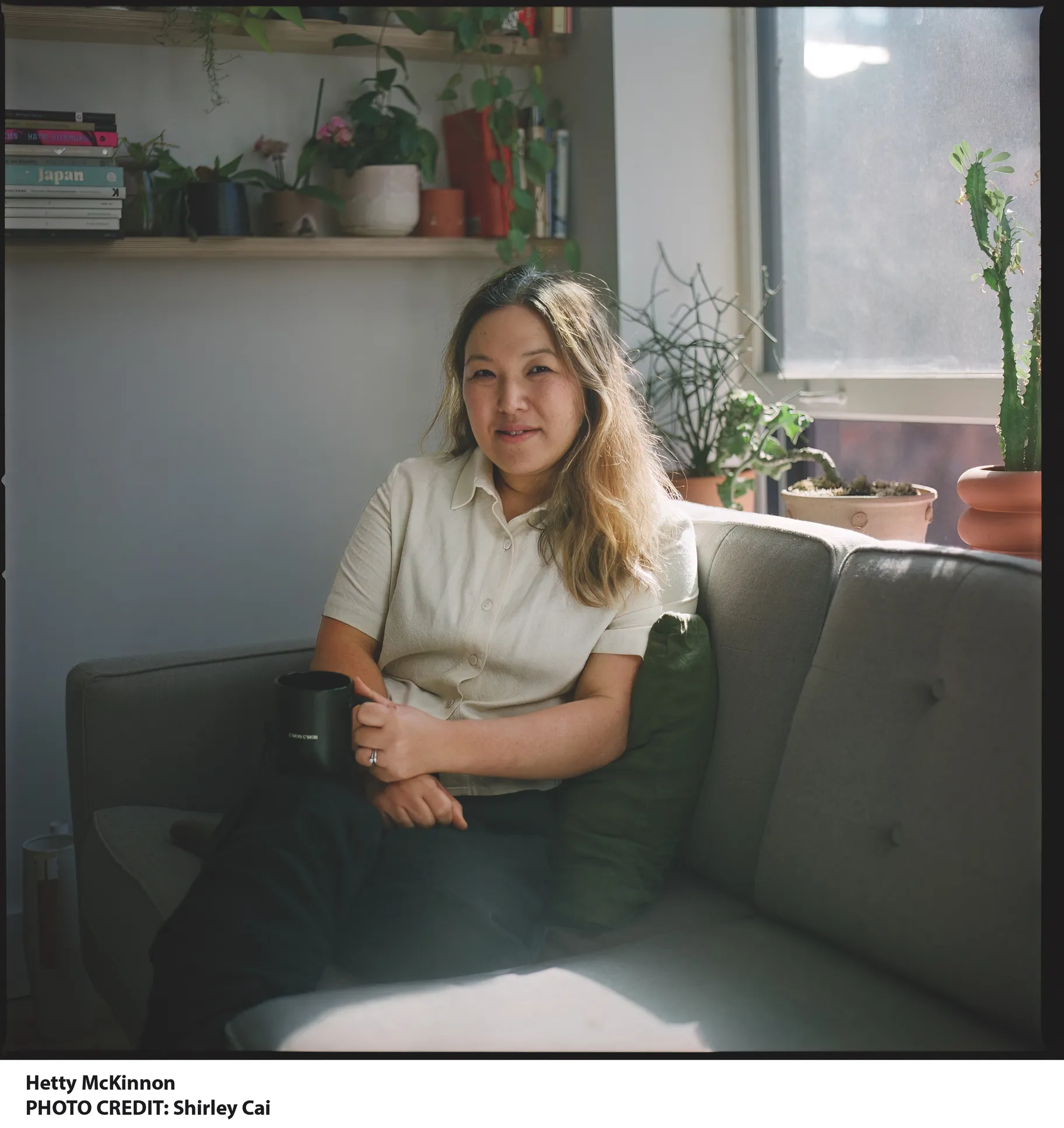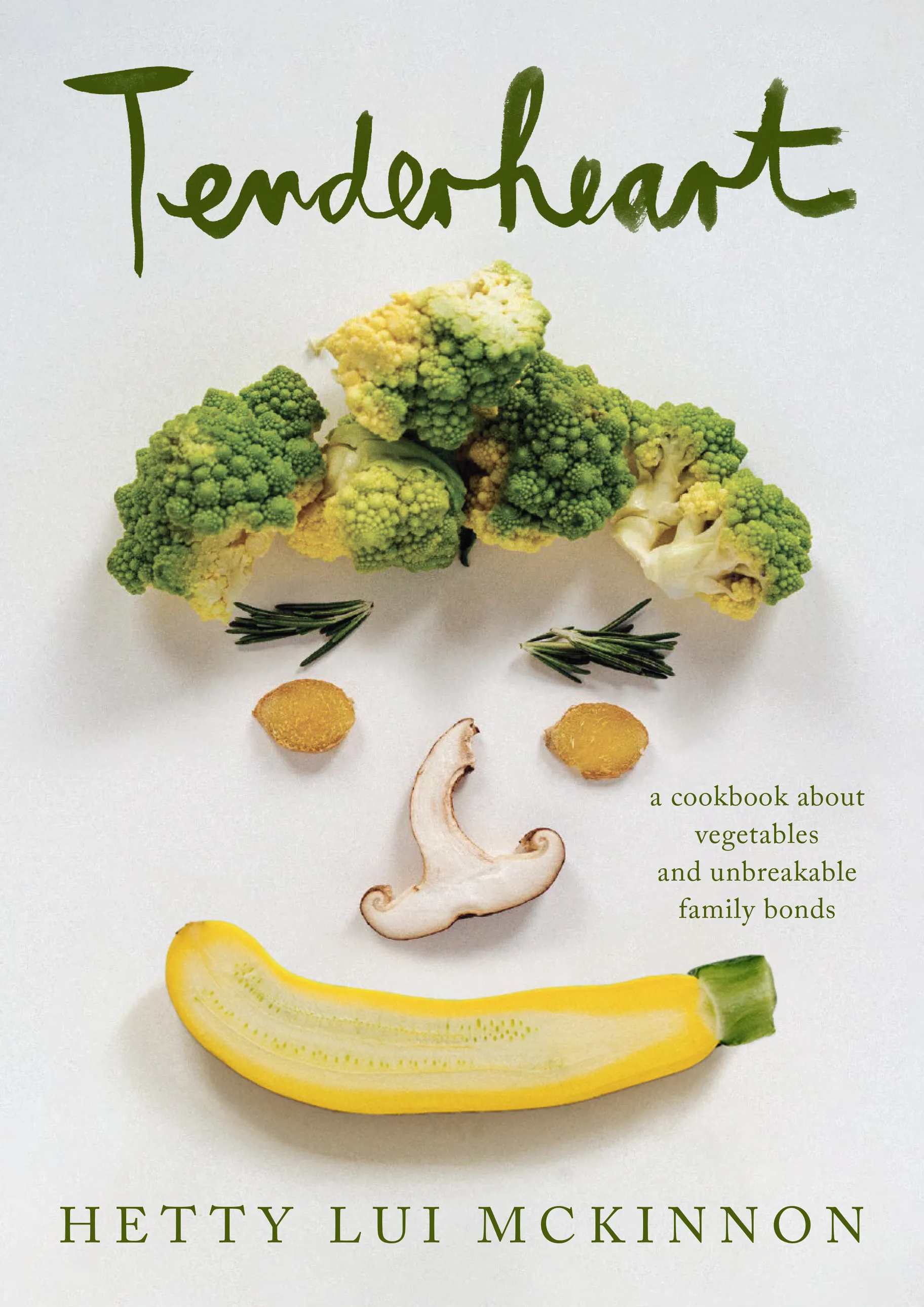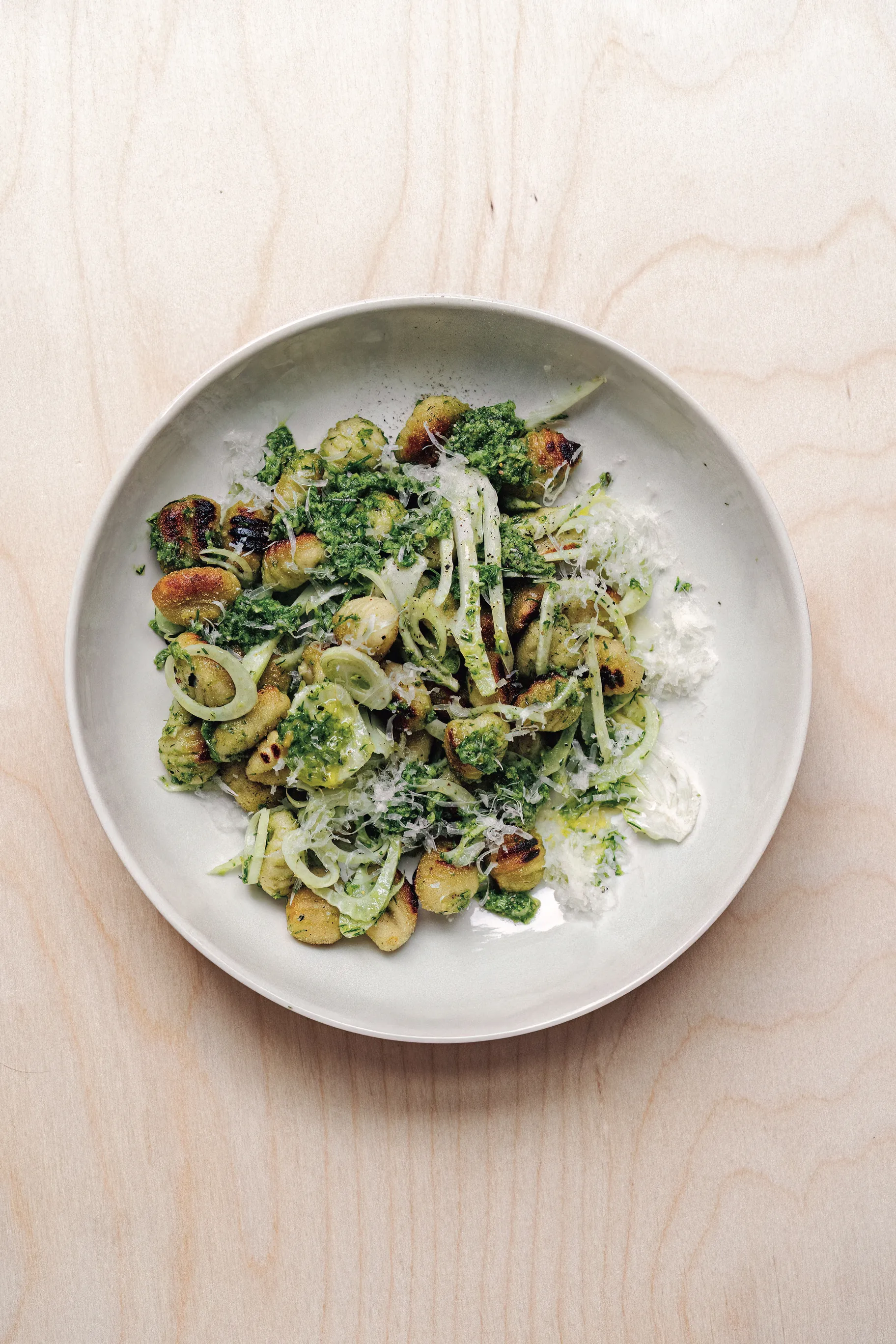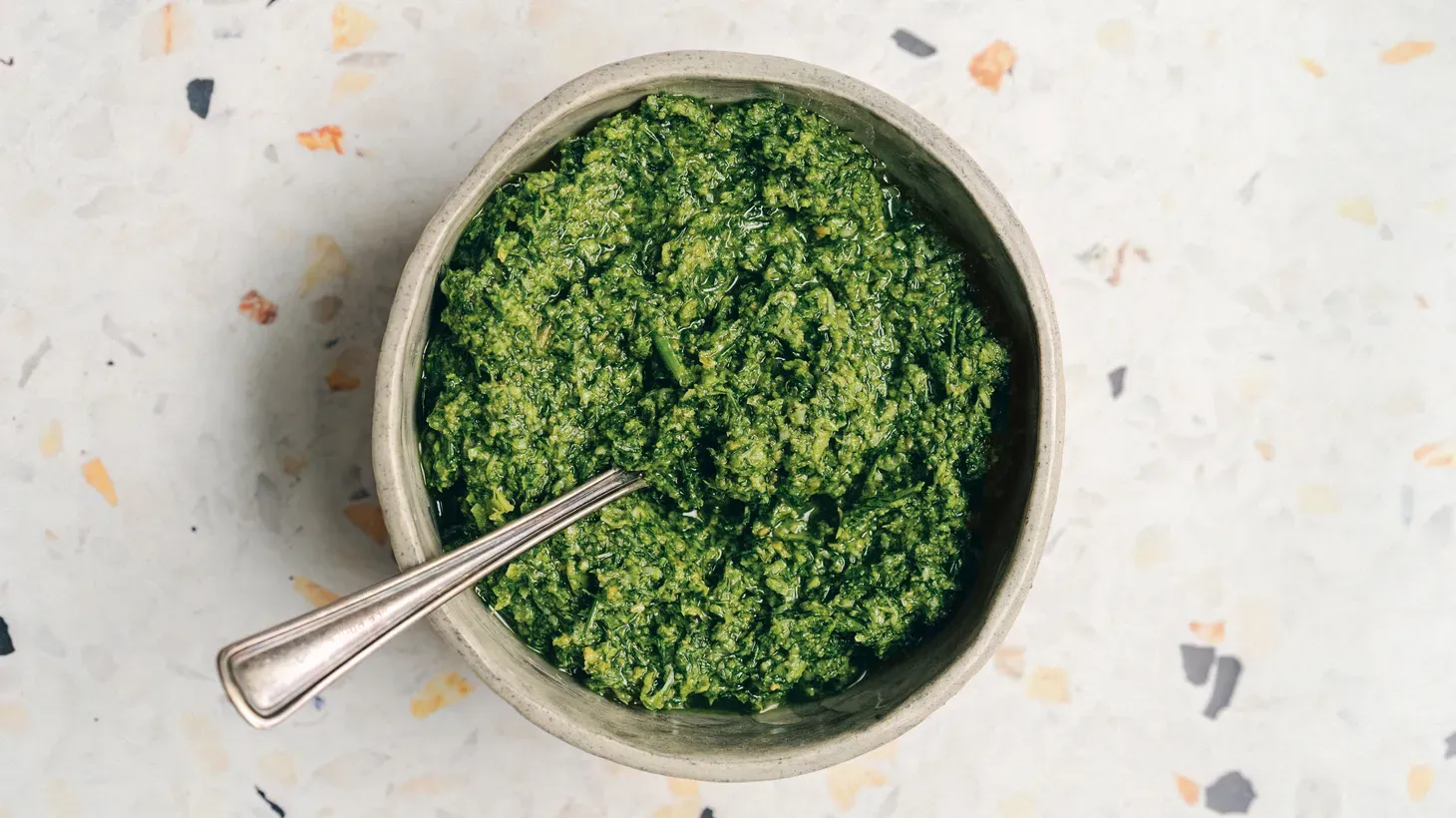Walking through grief is a daunting task. To do it publicly adds an entirely different level of complexity and emotion. In her new book “Tenderheart: A Cookbook About Vegetables and Unbreakable Family Bonds,” Hetty Lui McKinnon confronts the loss of her father and explores how his work shaped her future in food.
“I have often felt estranged from the person I was before my father died. So much of my living, my big moments happened in the years following. Graduating from university, getting married, having children, my career in food, moving around the world. Memory is fragile. It is not easy to hang on to the voice, the touch, the laughter, and the mannerisms of someone no longer with us. But living away from home, geographically distant from my mother and my siblings, has taught me that our past, our legacy is not always something we can hold on to physically, but it already lingers deep within us. Food has always been emotional for me. It is tied to my identity, my heritage, my family, and my community. It represents the experiences of the generations before me and it is a legacy for my children. In food, I find my home, and in this vegetable life, I have found a way to stay connected to my dad.” — Hetty Lui McKinnon, “Tenderheart”
The following has been edited and condensed for clarity.
KCRW: Wai Keung Lui was your father. He went by Ken after moving to Australia as a teenager from China. Tell us more about his life, his work ethic, and the job that came to define him.
My dad was very much a model immigrant in the 1950s. He came to Australia with his dad. They worked, they sent money home. He still had family in Guangdong Province where my family’s from. They were like the two elders of the family, the patriarchs. He eventually met my mom. It was an arranged marriage. The families knew each other. She came to Australia to marry him.
He worked at the markets with my uncle who actually lived next door to us in Sydney. He was a banana monger. That was his specific role. He worked for an import/export business, working specifically with bananas. Through that job, he made lots of friends with other vendors at the market. His world was this fresh world and that’s what he brought home to us. I didn’t really understand it at the time. As a child, you think this is what everyone grows up with, having fruits and vegetables right at the cusp of their seasonality. It’s such a luxury. When that was taken away, it became very evident how luxurious a life we led in terms of what we had at our fingertips at all times.
I found it really striking when you describe the time immediately after your father’s death, when your mother realized that she was going to have to shop for the family now and that all of these vegetables and fruits would not just magically appear in abundance in the house.
I was 15 when my father passed away. I’m the youngest child. I’ve got two siblings, and my mother had been in Australia at that time for probably 20 to 22 years. She had said to me one day, “I’ve never gone to buy vegetables before.” To actually go to the grocer get a little plastic bag and fill it with four apples or six carrots, she had never done that before because it had all been brought home by my father. So it was a huge period of awakening for all of us but particularly for my mother.
There’s an essay in the book about the reinvention of my mother and she really had to reinvent herself like in her 40s. She had to shop for food for the first time, catch public transport for the first time, go to the bank for the first time. She really had to push herself out of her comfort zone. I witnessed all of that because I was home with her. After my father died, I became very invested in being “good” for my mother because I didn’t want to cause her any more stress. So I stayed with her a lot, we would shop for food together, we cooked together, so it was the other side of food.

“I have often felt estranged from the person I was before my father died,” writes Hetty Lui McKinnon, as she considers milestone moments that occurred without him. Photo by Shirley Cai.
Why was now the right time to confront your loss on the page and honor your dad’s legacy?
It’s been almost a lifetime. It’s been more than three decades, and for most of my life, these words that I wrote on paper were not even thoughts I was bold enough to think. In Chinese culture, death is a little taboo. My mom, she did her best to move on with the family. We obviously talked about my dad but not in a way that I felt like I could keep his memory alive. With time, all the tactile things about a person kind of fade. You almost need to conjure these memories in your head. Whether they’re real memories or an amalgamation of memories, it’s not even that clear anymore.
Originally it was just a book about my favorite vegetables but in writing the book, I felt compelled to write about my father and this world that he created for me before he passed, this world that I lived before I was the salad lady or the lady that cooked with vegetables. These are my foundations. I felt like it was really important to keep that legacy alive. Writing these words down on paper was healing. I think writing these words and actually exploring the influence he had on me and letting that joy in his memory and the spirit of him being a tender heart, “Tenderheart” is actually about my dad, having that joy seep its way into all the recipes, it was such an amazing, joyous experience for me. When I think of this book, that’s how I feel. I feel joy. I feel a complete happiness in basking in his memory because I think for a long time, I was too scared to do that.
Let’s talk about vegetables. Starting with broccoli.
Oh, yes, broccoli is one of my favorites. It’s such an egalitarian vegetable. Everyone can have access to it. Most people I know love broccoli. My whole family loves broccoli. About a decade ago, I had a business in Sydney where I delivered salads and the favorite salad on that menu was a char-grilled broccoli with chickpeas, lemon, mint and chili peppers. Everybody just loved it. It’s a very simple salad. So broccoli to me is super exciting but also so accessible to everybody.
I love to chargrill it. I don’t have a barbecue or outdoor grill anymore, so I just do it in a pan. Getting that smokiness, getting that nice little char, a little bit of texture, it turns it into something completely different. You can also roast. I don’t often boil broccoli. I’m not a huge boiler of any vegetables but there’s a lovely recipe in the broccoli chapter where it’s blanched for two minutes in salted water, just to give it that kiss of saltiness. That’s served with boiled tofu, butter beans and sesame oil. It’s a really clean dish. So it’s a really versatile vegetable. I always have broccoli in my fridge.

“For most of my life, these words that I wrote on paper were not even thoughts I was bold enough to think,” says Hetty Lui McKinnon of her latest work, “Tenderheart: A Cookbook About Vegetables and Unbreakable Family Bonds.” Photo courtesy of Alfred A. Knopf.
You have a broccoli dish that you pair with a Sichuan dukkha. Could you describe what a dukkha is and how you made it Sichuan-ese?
A dukkha is a Middle Eastern nut and a spice. It can be made with many nuts. I’ve made pistachio dukkhas before. [I’ve made it with] almonds, even hazelnuts. But in this spice mix, I add some Sichuan peppercorns and it gives it that little tingly effect. The dukkha is a great way to add texture and interest and a little bit of spice to vegetable dishes. it’s really easy to make. Mine uses cashews to bring a little bit of that Asian influence.
There’s another recipe in the book based on a cacio e pepe but in the pepper mix, there’s a bit of Sichuan peppercorns, so it gives a little tingly effect. A cacio e pepe is a familiar flavor to many people. It’s a familiar dish. But when you add an ingredient that is slightly left field, like Sichuan peppercorn, it’s an “a ha!” moment. “I know this but it’s different.” I love that element of surprise when I’m coming up with my recipes.
Let’s talk about Asian greens. What do you consider Asian greens? And is there one you tend to use more frequently than the rest?
I have written about Asian greens in all my books. I’ve always wanted to show people that they can be used in dishes beyond stir fries or steaming. I love gai lan, Chinese broccoli. I love it because the stem has that lovely mustard undertone and this bitterness but also sweetness, similar to broccoli, similar to kale. I love how robust the stems are. It does very well being char-grilled. When I had an outdoor barbecue, I would often char-grill gai lan. It would be so beautiful because the leaves get crispy and smoky and charred. There’s a recipe that I absolutely love in the book called Charred Gai Lan with Farro and Soy Tahini. It’s a really simple dish and so flavorful. It’s a good jumping off point for a lot of people if they want to cook Asian greens in a different way.

Store-bought gnocchi served with a fennel frond pesto is a family favorite in vegetable guru Hetty Lui McKinnon’s house. Photo by Hetty Lui McKinnon.
You can make a pesto with so many different greens, but your fennel frond pesto is unique. When did you first conceive of it? Describe the texture and the flavors that set it apart.
I’m so happy you asked about it. This is probably one of the most cooked recipes in the book. My family loves this recipe. The pesto is made with fennel fronds, the beautiful grassy leaves at the top of the fennel. There’s only so much frond you can use to top a salad, so this is a really good way of using the entire fennel. The idea came to me from a friend of mine, Lisa Marie Corso. During COVID, I would exchange recipes with friends. She told me that she was using her fennel fronds to make pesto. I thought, “That’s really amazing.” The recipe in the book is not hers. I’ve played around with my own versions.
It’s a different pesto because it feels really, really green. It feels almost grassy. I know “grass” is not really a foodie word but I actually love that. It’s the association I get when I eat dill. It’s very fresh. It’s much more textural than a normal pesto that’s made with basil. It has this lovely freshness to it. It feels really bright. You shave the fennel and you use the tops to make the pesto then it’s served with pan-fried gnocchi, which is just the shelf-stable gnocchi. You don’t have to make gnocchi from scratch. It is a really lovely dish that my family loves.
Kale, brussels sprouts, and cauliflower have all had their moment in the spotlight recently. Do you have a prediction about the next “it vegetable”?
I think it’s going to be potatoes. I have had a potato resurgence. It really wasn’t until I was working on my third book, about comfort foods, that I thought, “What gives me comfort?” And it was potatoes.
So I did a jacket potato recipe from my days in London, when we would often eat a jacket potato for lunch. It feels so indulgent. I even eat potatoes with rice. That’s very normal for me. There’s this lovely dish in the potato chapter called My Mum’s Velvet Potatoes. My mum makes his amazing pork chop dish with potatoes. She silkens the potatoes and the pork chops with cornstarch. That softens the meat but also adds a silkiness to the potatoes. I’ve just left out the pork chops and used that technique for her potatoes. I’ll eat that with rice. So I think potatoes are coming back in fashion.
Fennel and Gnocchi Salad with Fennel Frond Pesto
Serves 4
Here is a lovely double fennel salad, a wonderful way to show how we can create an entire meal around one vegetable: crunchy shaved raw fennel is slathered in fennel frond pesto and tossed with crispy morsels of pan-fried gnocchi. This salad shows how anise flavors can be layered without overthrowing the other ingredients or dominating the overall dish. This is an adaptable recipe, too—add some roasted broccoli or cauliflower, incorporate a leafy green, such as baby spinach or watercress, or substitute a filled pasta like tortellini or ravioli for the gnocchi. You could also use a short pasta shape in place of the gnocchi. You can use either vacuum-sealed or frozen gnocchi—if using frozen, don’t thaw it first! I like to use baby fennel in this salad because they are sweeter and more tender, but regular fennel works just fine.
Ingredients
- extra-virgin olive oil
- 1 pound 10 ounces (750 g) gnocchi
- sea salt and black pepper
- 2 baby fennel bulbs (about 13 oz/375 g) or 1 regular fennel bulb (about 12 oz/350 g), finely sliced
- ¾–1 cup Fennel Frond Pesto (see page 200)
- handful of grated parmesan, pecorino or cheddar
Instructions
- Place a large skillet over medium- high heat. When hot, drizzle in 2–3 tablespoons of olive oil, add the gnocchi and season with a pinch of sea salt. Pan-fry for 3–4 minutes, tossing the gnocchi often, until golden on both sides.
- Transfer the gnocchi to a large serving plate, add the fennel and fennel frond pesto and toss until well coated. Serve with a handful of grated cheese on top.
From “Tenderheart: A Cookbook About Vegetables and Unbreakable Family Bonds.” © 2023 by Hetty Lui McKinnon. Excerpted by permission of Alfred A. Knopf, a division of Penguin Random House LLC. All rights reserved. No part of this excerpt may be reproduced or reprinted without permission in writing from the publisher.

